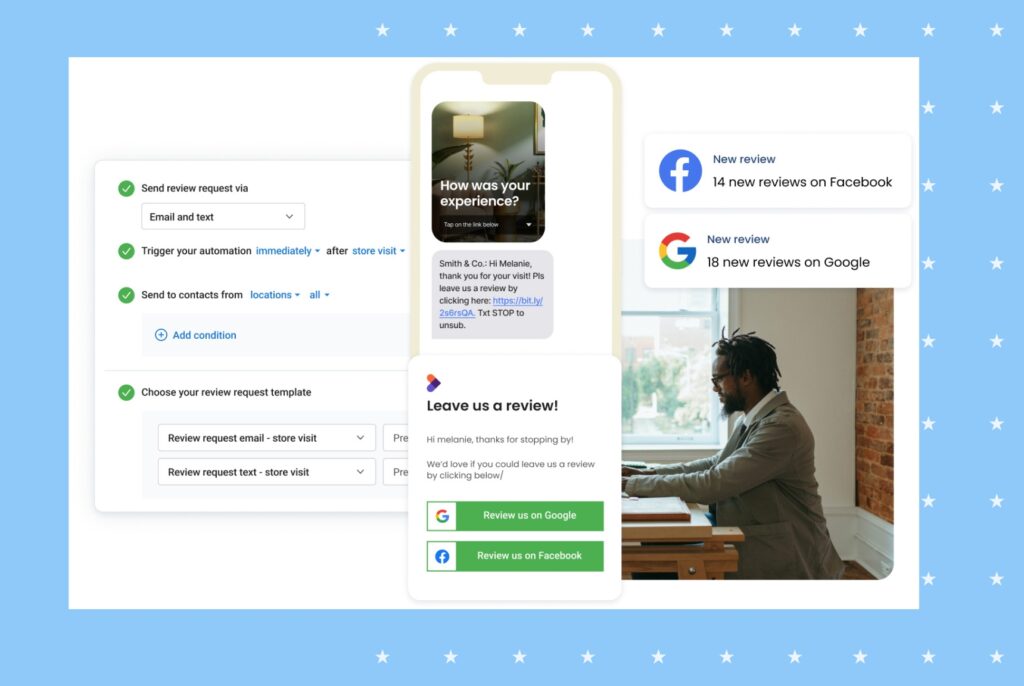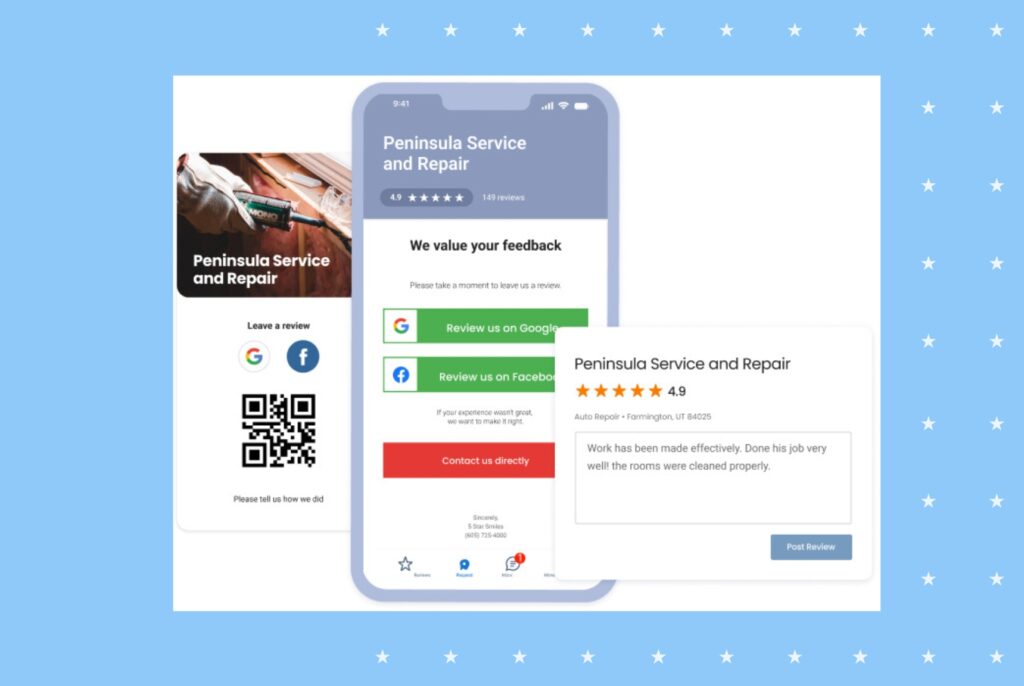Overview of Google Review Automation
Google review automation leverages technology to streamline the collection, monitoring, and response to customer reviews on Google Business Profile. This process is especially valuable for businesses seeking to maintain a strong online reputation without dedicating excessive manual effort. Automation tools can handle repetitive tasks, ensure timely engagement, and provide actionable insights from customer feedback.
Key Components of Google Review Automation
Automated Review Requests
- Trigger-Based Invitations: Tools can automatically send review requests after specific customer interactions, such as a completed purchase or service visit, increasing the likelihood of receiving feedback.
- Personalization: Messages can be customized based on customer type (e.g., first-time vs. repeat clients) and preferred communication channels (email, SMS).
- Direct Links: Automated messages often include direct links to the review page, simplifying the process for customers.
Automated Monitoring and Alerts
- Real-Time Notifications: Businesses receive instant alerts when new reviews are posted, enabling prompt responses.
- Centralized Dashboard: Many platforms aggregate reviews from multiple locations and sources, providing a unified view for management.
Automated Responses
- Template-Based Replies: Businesses can set up predefined responses for different types of reviews (positive, negative, neutral), ensuring consistency and saving time.
- AI-Powered Responses: Some tools use artificial intelligence to draft contextually appropriate replies, though customization is still recommended to avoid sounding robotic.
Analytics and Reporting
- Sentiment Analysis: Advanced platforms analyze review content to gauge customer sentiment and identify trends.
- Performance Metrics: Dashboards display key metrics such as average rating, total reviews, response rate, and response time, aiding in data-driven decision-making.
Benefits of Automation
- Time Savings: Automation reduces the manual workload associated with requesting and responding to reviews.
- Consistency: Ensures all customers are invited to leave feedback and all reviews receive timely responses.
- Improved Reputation: Quick, personalized responses demonstrate attentiveness, which can enhance customer satisfaction and loyalty.
- SEO Boost: A steady stream of fresh, positive reviews can improve local search rankings on Google.
- Scalability: Particularly beneficial for businesses with multiple locations, as automation tools can manage reviews across all branches efficiently.
Popular Tools and Platforms
| Tool | Key Features | Notable Pros | Notable Cons |
|---|---|---|---|
| Birdeye | Review collection, monitoring, AI responses, analytics | Integrates with multiple platforms, detailed insights | Higher cost, some dashboard issues |
| Yext | Review management, AI-generated responses, reporting | Automated alerts, centralized inbox | Steeper learning curve, support issues |
| ReviewTrackers | Multi-platform review aggregation, auto-respond, analytics | Corporate-friendly, in-depth metrics | Pricing not transparent |
| Broadly | Automated requests, multi-platform monitoring | Easy setup, customizable messages | Limited advanced features |
| Orderry | CRM-integrated review requests, customizable triggers | Budget-friendly, tailored workflows | Less feature-rich than enterprise tools |
Legal and Ethical Considerations
Automating Google reviews is legal and compliant with Google’s guidelines, provided businesses do not generate fake reviews, incentivize positive feedback unfairly, or manipulate customer sentiment. Authenticity and ethical practices are essential to maintain credibility and avoid penalties.
Implementation Steps
- Select a Tool: Choose a platform that fits your business size, budget, and feature needs (e.g., Birdeye, Yext, ReviewTrackers).
- Integrate with Google Business Profile: Ensure the tool syncs with your business listing for seamless automation.
- Set Up Triggers and Templates: Define when review requests are sent and customize response templates for different scenarios.
- Monitor and Adjust: Regularly review analytics to identify trends and refine your approach.
Conclusion
Technology and automation significantly simplify Google review management, enabling businesses to collect more feedback, respond faster, and gain valuable insights—all while maintaining compliance and authenticity. By selecting the right tools and strategies, businesses can enhance their online reputation and customer engagement efficiently.





